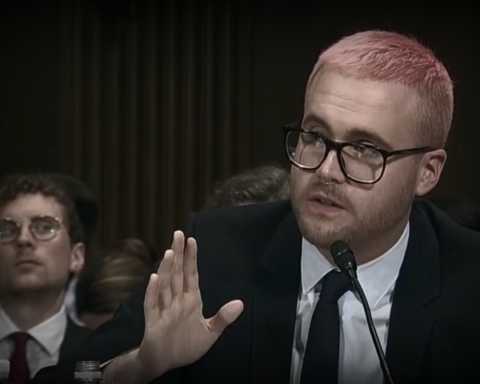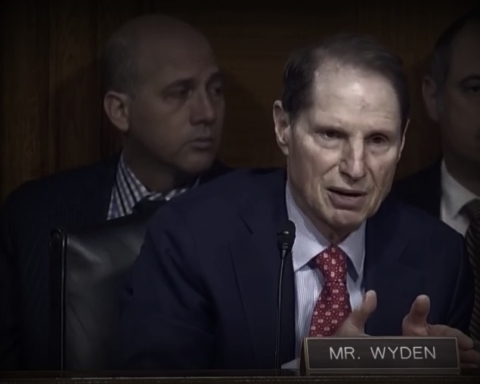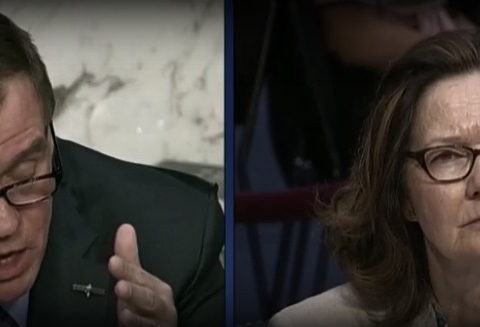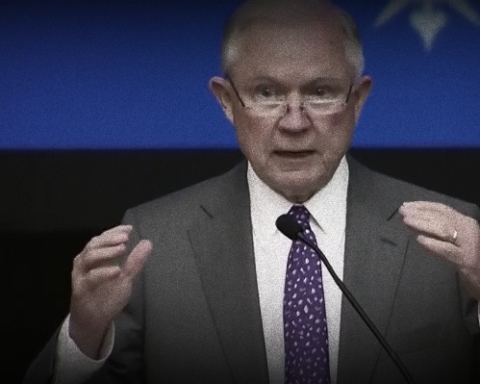Court documents declassified by the Department of Justice and the Office of the Director of National Intelligence (ODNI) show how the government relied on fear and false promises to gain a top secret court’s approval for the post-9/11 surveillance dragnet program.
“[They] seek to use our own communications infrastructure and laws against us, as they secrete agents into the United States, waiting to attack at a time of their choosing,” wrote then-Attorney General Alberto Gonzales to the Foreign Intelligence Surveillance Court (FISC) in December 2006, describing a “threat” whose identity was redacted.
That, according to Gonzales, justified NSA surveillance en masse. It also justified the agency’s sidestepping of Fourth Amendment restrictions on domestic spying without first obtaining a warrant from a judge.
It was the opening salvo from the Bush administration in a fight to effectively retroactively legalize some of its intelligence activities, as it transitioned the “Terrorist Surveillance Program” to the auspices of the FISC in 2007.
At the end of 2001, President Bush had authorized the NSA to dramatically ramp up its surveillance activities–in particular, the ingesting of wide swaths of supposed international communications both entering and leaving the United States. This spying not only touched innocent civilians in foreign countries who were not suspected of any crime, but also a large number of Americans communicating with friends, relatives and associates abroad. The White House claimed the authority to conduct this surveillance using the 2001 Authorization for Military Force and the president’s constitutional war powers.
Years later, as a result of Justice Department infighting over the program’s legality, journalists disclosing evidence of warrantless wiretapping within the United States, and growing pressure from lawmakers, the program started unraveling. In 2007, rather than authorize further collection using executive powers, President Bush sought approval from the top-secret FISC to continue dragnet surveillance.
The documents released by the DOJ and the ODNI show how the government went about making its case to the court, just as 9/11 was receding in Americans’ collective memory, and the emergency nature of the President’s surveillance program was becoming decreasingly relevant.
The Attorney General began by reminding the court of the 9/11 attacks, claiming that, “Although the United States has not suffered another such attack in the five years since that day, the threat has in many ways increased.”
Gonzalez claimed that being forced to file “individual applications under FISA” against each new telephone number or email address believed to belong to a foreign agent would lead “the loss of significant actionable intelligence.”
“Time is of the essence,” Gonzalez wrote. By the time the spy agency’s received approval from the court to target a particular account, “the account may no longer be in use,” he claimed.
Instead, the administration argued that the FISC should allow the government to conduct widespread spying, and only notify the court after the fact of any new surveillance targets. In pleading its case, the Bush administration said it would comply with NSA minimization procedures for obscuring sensitive details about domestic communications.
“The approach detailed in this Application….would greatly enhance the speed and flexibility…to find enemy operatives,” the Attorney General claimed. He added, “granting this Application would make it possible to collect communications to and from a substantial number of telephone numbers or email addresses being used by such operatives who otherwise would not be surveilled due to resource constraints.”
The Attorney General promised the court that “because of minimization procedures that will be carefully applied at the acquisition state, collection will be targeted at only” foreign sources of intelligence.
In a January 2007 FISC order, Judge Malcolm Howard assented to the administration’s claims, and granted the application. The next month, President Bush declined to authorize the program using his executive authority.
Months later, Congress passed the Protect America Act (PAA), which codified the intelligence community’s requests to conduct foreign surveillance without individualized warrants, even when signals include the communications of American citizens. A year later, after the expiration of the PAA, Congress passed the FISA Amendments Act, which further broadened the collection criteria for intelligence agencies.
Subsequent documents, made public by journalists working with former NSA contractor Edward Snowden and Freedom of Information Act requests, show the difficulties the NSA had in fulfilling the promises it made to the FISC back in 2007.
FISC Judge John Bates declared the NSA’s activities illegal in a secret 2011 ruling revealed in August of last year in response to a FOIA request. Bates accused the agency of misleading the court.
A 2012 inspector general audit of the NSA revealed by Snowden demonstrated that the spy agency violated its own minimization procedures and overstepped its legal authority thousands of times annually.






